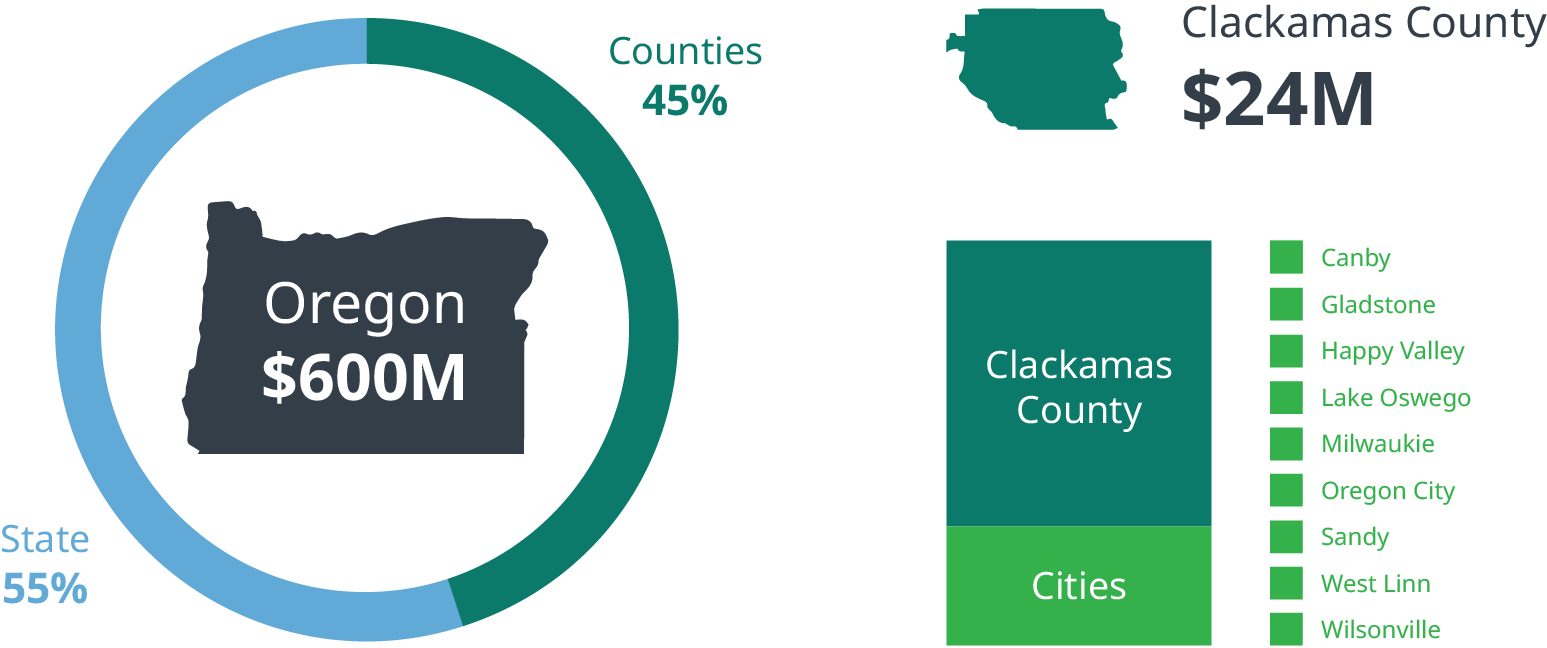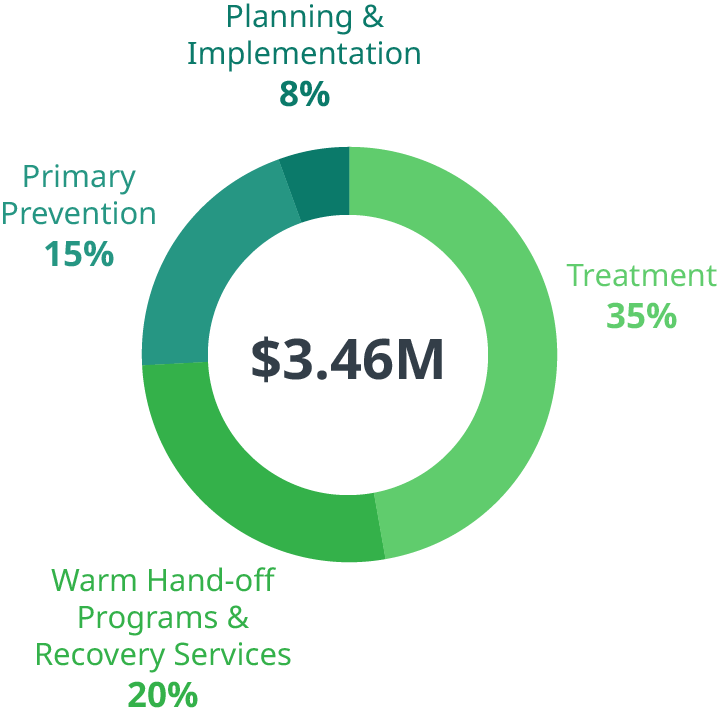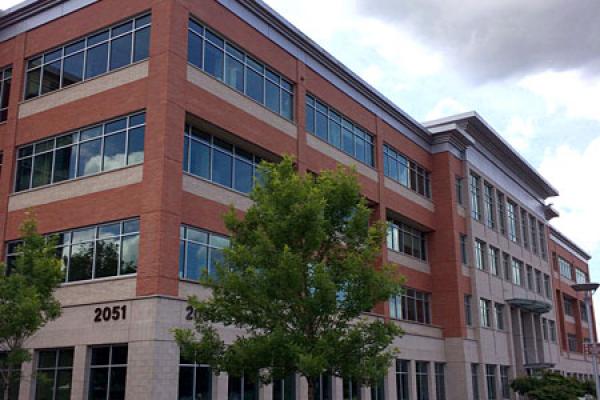Since July 2021, the State of Oregon, counties and cities have reached agreement on national lawsuits against several companies for their role in the opioid crisis. Through these agreements, over $24 million will be awarded to Clackamas County over the course of 18 years.
Project outcomes as of August 2024
Investments to address the opioid crisis will require continued collaboration across systems with a focus on efforts highlighted in the National Settlement Agreement.
Clackamas County's Opioid Settlement Framework will be led by the following guiding principles to ensure that the dollars will be used most effectively:
- Using evidence to guide investments
- Lifting up health equity
- Supporting collaboration
- Transparency and accountability
As of February 2024, funds have been received from:
- Distributor Settlement payments
(settlements between the State of Oregon and participating subdivisions and McKesson, Cardinal and AmerisourceBergen) - Janssen Settlement payments
(settlement between the State of Oregon and participating subdivisions and Johnson & Johnson, Janssen Pharmaceuticals, Incorporated, and Ortho-McNeil-Janssen Pharmaceuticals, Incorporated) - Mallinckrodt Settlement payments
(settlement between the State of Oregon and participating subdivisions and Mallinckrodt Pharmaceuticals) - Teva & Allergan Settlement payments
(settlement between the State of Oregon and participating subdivisions and Teva Pharmaceutical Industries, Ltd. And Allergan Pharmaceuticals) - CVS, Walgreens, and Walmart Settlement payments
(settlements between the State of Oregon and participating subdivisions and CVS, Walgreens, and Walmart pharmacies) - Publicis Worldwide
(not subject to 55/45% split with subdivisions) - Additional restitution funds from Oregon Department of Justice
(not subject to 55/45% split with subdivisions) - Additional payments are pending from settlements with Endo Health Solutions, Hikma Pharmaceuticals, Kroger, and Purdue Pharma.
These settlements will provide substantial funding to Oregon and local communities, including Clackamas County, to mitigate harms associated with the opioid and other drug crisis. This funding provides an opportunity to make strategic investments in evidence-based strategies that will strengthen our communities, prevent opioid use and stem the rising number of overdose deaths.
How the Funds are Being Spent
Total opioid settlement funding committed for 2023-2026
The Clackamas County Board of County Commissioners (BCC) awarded $1,000,000 in opioid settlement funding through a community grants process in 2024 that supports the priorities of the BCC to address urgent needs related to substance use across the community and alignment with a recovery-oriented system of care (ROSC). A ROSC is a coordinated network of community-based services and supports that is person-centered and builds on the strengths and resilience of individuals, families and communities to achieve abstinence and improved health, wellness, and quality of life for those with or at risk of alcohol and drug problems
Additional funds have been allocated to County programs and services that address substance use prevention, early intervention, treatment, and recovery programs that support individuals with a substance use disorder (SUD) and/or are involved with the justice system.
Learn more about the projects supported by opioid settlement funding below.
Community Engagement
Community perspectives from nearly 60 local organizations serving Clackamas County were gathered to identify current service gaps and prioritize approved abatement strategies to inform settlement allocation decisions. Common themes of existing gaps in accessing services include workforce and transportation challenges, as well as a lack of culturally responsive services. Participants also identified the following:
 Translate
Translate








